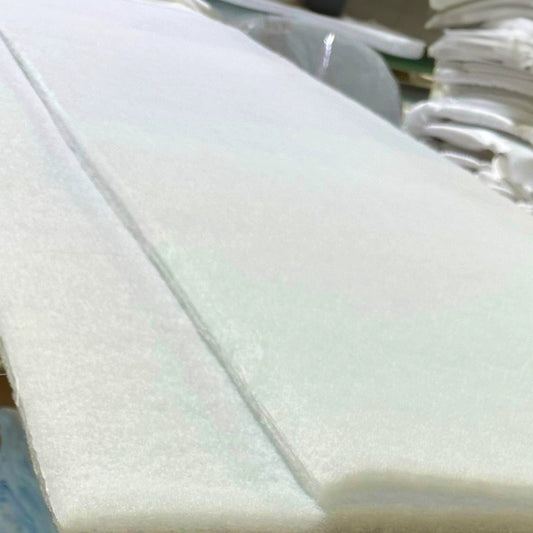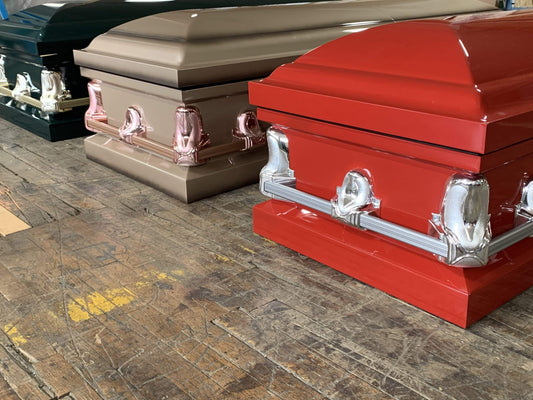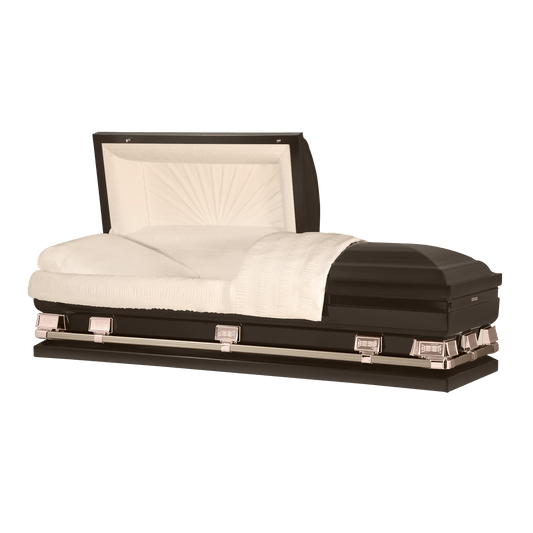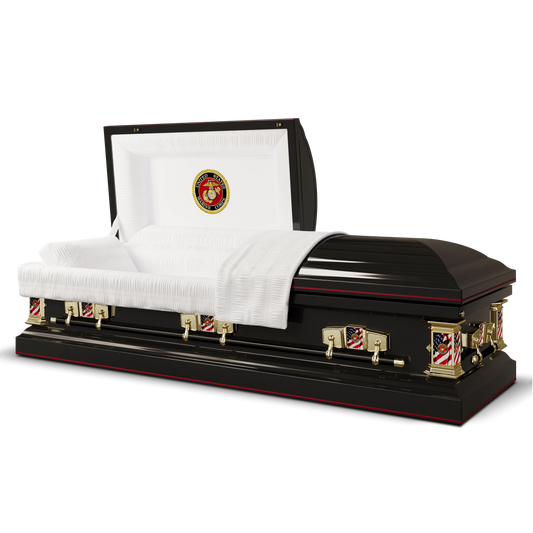After death, a person’s physical body will need to be gently cared for while preparing burial or cremation. Many people choose to care for a body at home for several reasons, including preservation, preparation, respect, and tradition.
Understandably, caring for a body while preparing body for burial or cremation may be uncomfortable or too overwhelming for some. It is not common in modern American culture to care for a body at home after a death, so many choose to entrust such duties to a third-party, such as a funeral home or a healthcare provider. However, many of those who have decided to participate in private body care at home have found it to be much simpler and therapeutic than they had previously thought. Preparing and caring for the body at home can help facilitate the grieving process – it is usually the last physical contact with a departed loved one before burial or cremation. Caring for a loved one’s body is an intimate and special experience that can be truly positive for family and friends of the departed, as it is ritual fueled by love and respect.
How To Bathe A Body
One of the most important first steps to proper at-home body care is to bathe the body. The bathing of a body can be as simple or as ritualistic as one desires. A simple bath that includes nothing but water and soap is just as fine as a spiritual bath using candles and prayer. The location of the bathing also is at the discretion of those performing it – some common places include a bed or table, indoors or outdoors. After a body is bathed, it should be moved to a more permanent location until moved from the home for burial or cremation.
Steps And Materials Required To Bathe A Body Properly:
- Lay down some a cover on top of the bathing area – a plastic sheet or absorbent padding are amongst some of the common covers used for bathing.
- Make sure you have all the items necessary to conduct a proper bath – these items usually include gloves, a water basin, towels/washcloths, and soap (both for the hair and body). You may also wish to add a special fragrance or flower petals to the water.
- While wearing gloves, wash the entire body thoroughly – as muscles relax after death, there may be extra attention needed to the areas where the body releases the contents of the bladder and intestines. Also, make sure to wash and dry any skin folds which might conceal parts of the body that need to be cleaned.
- If there are any open wounds, clean them thoroughly and bandage them as one would normally on a living body.
- Oral hygiene is considered important by many in the bathing process so make sure to clean inside the mouth as well (a standard toothbrush is a completely appropriate tool for this step).
- After the procedures which require water are done, dry the body thoroughly.
- If necessary (depending on the location of the bath), clear the wet items and replace them with dry items.
- After a complete washing and drying of the body, shaving, nail care, dressing, and makeup can be done.
- Place the body in the desired location until it is moved from the home for burial or cremation.
Preparing The Body For Burial After Washing
It is important to start the procedures of preparing a body after death quickly to avoid any complications due to rigor mortis – the stiffening of the muscles and joints in the body which usually sets in a few hours after someone has passed. If rigor mortis has already set in, many of the procedures of at-home body care are still possible to conduct, however, they may be more challenging – for example, dressing the body may require cutting of clothing. Massaging the joints and muscles may help soften some stiffness, although the simplest solution is to try to finish much of the procedures which require flexibility and movement before the stiffness sets in.
Other Body Preparations For Burial:
- Eyes: After a loved one has passed away, their eyes may not be fully closed. One way to remedy this is to gently close the lids entirely and place a small weight over them (such as a small plastic bag filled with rice or sand). The eyelids should eventually be able to stay closed on their own – the timing for this procedure usually averages around a couple of hours.
- Mouth: After a loved one has passed away, their mouth may not be fully closed. One way to close the mouth is to bring a long, non-slip material, such as a bandage or scarf, underneath the chin, bring the two ends up and knot them together at the top of the head. The mouth should eventually be able to stay closed on its own – although there is a chance the mouth will never completely close without the wiring and sutures often used by professionals. The timing for this process averages between 1-2 hours. It is important to note that this process is usually much easier if another person assists by holding the mouth closed while someone the knot is being tied.
How To Manage The Condition Of The Body For Burial
Like any organic material, the appearance of the body after death will change over time. The most common changes are rigor mortis, muscle relaxation (facial changes tend to be the most visibly noticeable changes due to muscle relaxation), and change of color (the body often becomes paler). The amount of change depends on time – changes will occur no matter if preparing the body lasts a few hours, or a few days – cause of death, the condition of the body prior to passing, temperature, if any procedures, such as an autopsy, have been done to the body, etc. Because of all these factors, it is recommended to start cooling a body within 4-6 hours after death to keep the body in good condition during at-home care.
Plan Your Farewell with Grace – Our Pre-Planned Caskets Offer Peace of Mind
How To Cool The Body
Methods for keeping a body cool depends on the length of time the body remains in a home. If the body is being kept for a short amount of time (up to 24 hours), turning on the air conditioning or opening windows is usually sufficient enough to keep a body cool. If a body is kept at home for several days, a body can be kept cool using cooling materials, such as ice packs or dry ice. If dry ice or ice packs are being used, make sure to wrap them in a cloth or bag so they do not have direct contact with skin. Many who have chosen to conduct at home cooling have found that cloth, or towels, help absorb moisture from the condensation as the cooling materials start to warm up. Place the ice packs or dry ice underneath each shoulder, the lower back, the hips, under the head, and on top of the lower abdomen. Since the materials used to cool the top of the body will be more exposed to the air, they will need to be changed more frequently than the materials used underneath the body. Remember, this process is known as “cooling the body,” not “freezing the body,” – the skin should always be able to move or give slightly otherwise the skin is frozen. In order to keep the body from freezing, there will need to be a lot of contact and disturbance of the body – these disturbances are to ensure the placement of cooling materials, such as dry ice, do not stay in the same place for too long and freeze the skin underneath.
Many who choose to perform at home cooling prefer to use a foam pad between the body and the surface being used to lay the body on (a table, mattress, etc.). Foam padding not only provides additional protection to the surface underneath the body, using a thick foam pad (3 inches) allows for cooling materials to sink down underneath the body while keeping the body reasonably level. Many have also found that foam padding acts as insulation for the cooling materials, so they last longer and do not need to be changed as frequently – which also means the body doesn’t have to be disturbed as often.
One important note about using dry ice is that it requires careful handling. Dry ice can burn the skin of both the body and its caretaker. Dry ice also is a gas-omitting material so proper room ventilation is extremely important.
Polymer refrigerants are often used as a cooling alternative due to many different reasons. The most popular reasons are that they are reusable, easy to use, they don’t give off any fumes or cause condensation, and they can be used for long periods of time. Once the polymer refrigerant has been activated, it usually continues to work effectively for up to 4 hours – especially when used both beneath and on top of a body simultaneously. One of the most popular polymer refrigerants is Techni-ice.
Other effective methods of body cooling are the use of a cooling vest and towels. These methods bring body temperature down quickly, effectively, evenly, and gradually without severe side effects, such as freezing. These methods also stay cold for fairly long periods of time. A couple of disclaimers for these cooling methods: purchasing these products often take advanced preparation, placing/adjusting/removing these products require more radical disturbances of the body, and these cooling techniques work best for bodies which are stationary (rather than those being transported).
Common Questions About Caring For A Body At Home
- Would a loved one want to be cared for at home? – This question should be one of the most important factors to take into consideration before deciding to care for a loved one’s body at home. Be sure to check if this information is available in the form of an advanced directive or another form of a written document. The process of caring for a body at home may be very comforting to those who know it was a part of their loved one’s final wishes.
- Who makes the decision to care for a body at home? – In most states, custody of a body will be held by the next of kin which gives them the power to choose if a body will be prepared for burial or cremation at home, or at a third-party such as a funeral home.
- Is planning required to take care of a body at home? – Planning to care for a body at home is not necessary, but it may make things much less stressful. Planning allows for thoughtful delegation of tasks and jobs between friends and family, as well as third parties. Planning allows for questions to be asked and answered, effectively getting everyone (such as friends, family, the community, medical professionals, funeral directors, cemeteries/crematoriums, etc.) all on the same page.
- How often will the body be disturbed during the cooling process? – The answer to this question will depend on many things, such as how long the body will be kept at home, what the state considers to be proper cooling, the type of cooling material used, etc. Many families choose to surround the body of a loved one with artifacts and therefore prefer that the body be minimally disturbed. To accommodate this, make sure to be properly prepared and educated on body cooling to optimize the cooling process to require a minimal amount of disturbances.
- Do regulations for at-home care change depending on location? – The short answer for this question is: yes. Be sure to inquire about the laws of your state before preparing a body for burial at home. There are multiple ways to find this information – here are just a couple:
- Ask a local Funeral Consumer Alliance affiliate.
- The Funeral Ethics Organization has composited information regarding consumer rights by state.
- Explore state requirements regarding at-home care.
- Do specific documents need to be obtained to care for a body at home? – There is a chance legal documents will be required. Some of these documents may be as simple as a death certificate, while others get as complicated as needing to acquire permits. Contact local offices such as the Office of Public Health, a recorder’s office, or the Office of Vital Statistics to inquire further about the possible documents needed to care for a body at home.
- What comes after preparing a body at home? – There are several steps to follow when a body is ready to be moved out of a private home. Not all of these steps will pertain to every specific situation however, it is best to think out all of the aftercare steps as to leave as much time for the plan’s execution.
- Moving the body – Someone (or several people) will need to be able to lift and carry the body from the residence to a vehicle for transport. Also make sure to understand the rules and regulations regarding the transportation itself – both with the vehicle and with the condition of the body (in a container, covered with a blanket/shroud, etc.).
- Documentation – If any paperwork needs to be filled, obtain the documents, fill them, and deliver them as quickly and efficiently as possible – this way, it won’t cause any problems when the time comes to transport the body. Make sure to obtain several copies in case the documents are needed at a later time.
- Delivery – Make sure that the location the body is being transported to will accept the delivery. Also, make sure the body is in proper condition to be transported. For example, pacemakers and metal joint replacements may need to be removed prior to transporting a body to a crematorium.
- Purchase a container or blanket – Make sure to purchase a container to hold the body of a loved one after (or even during) transportation. The most popular choice for containers is often caskets, coffins, urns, or even shrouds. Titan Casket offers high quality caskets and coffins. In hopes to make the purchase of a container easier.
- Plan and arrange a service – If a formal service is to take place after caring for a body at home, make sure to contact a funeral home or religious institution well ahead of time to discuss the desired service. Also, make sure to clarify that the deceased will be taken care of privately and the body will need to be transported to the establishment at an appropriate time for the service.
Caring for the body of a loved one can be a positive, therapeutic experience for many. Friends and family often work together through the intimate experience of cleaning, maintaining, and tending to the body of a loved one before they leave home for the last time. While preparing a body for burial or cremation can seem intimidating and challenging, we at Titan Casket hope this guide can make the process slightly easier. If you have any questions or need further assistance, feel free to contact us at any time.

![Upgrade to Premium Weight [18-gauge steel]](http://titancasket.com/cdn/shop/products/casketthicknesswithnumbers.png?v=1680642906&width=533)








